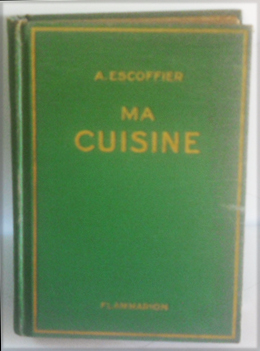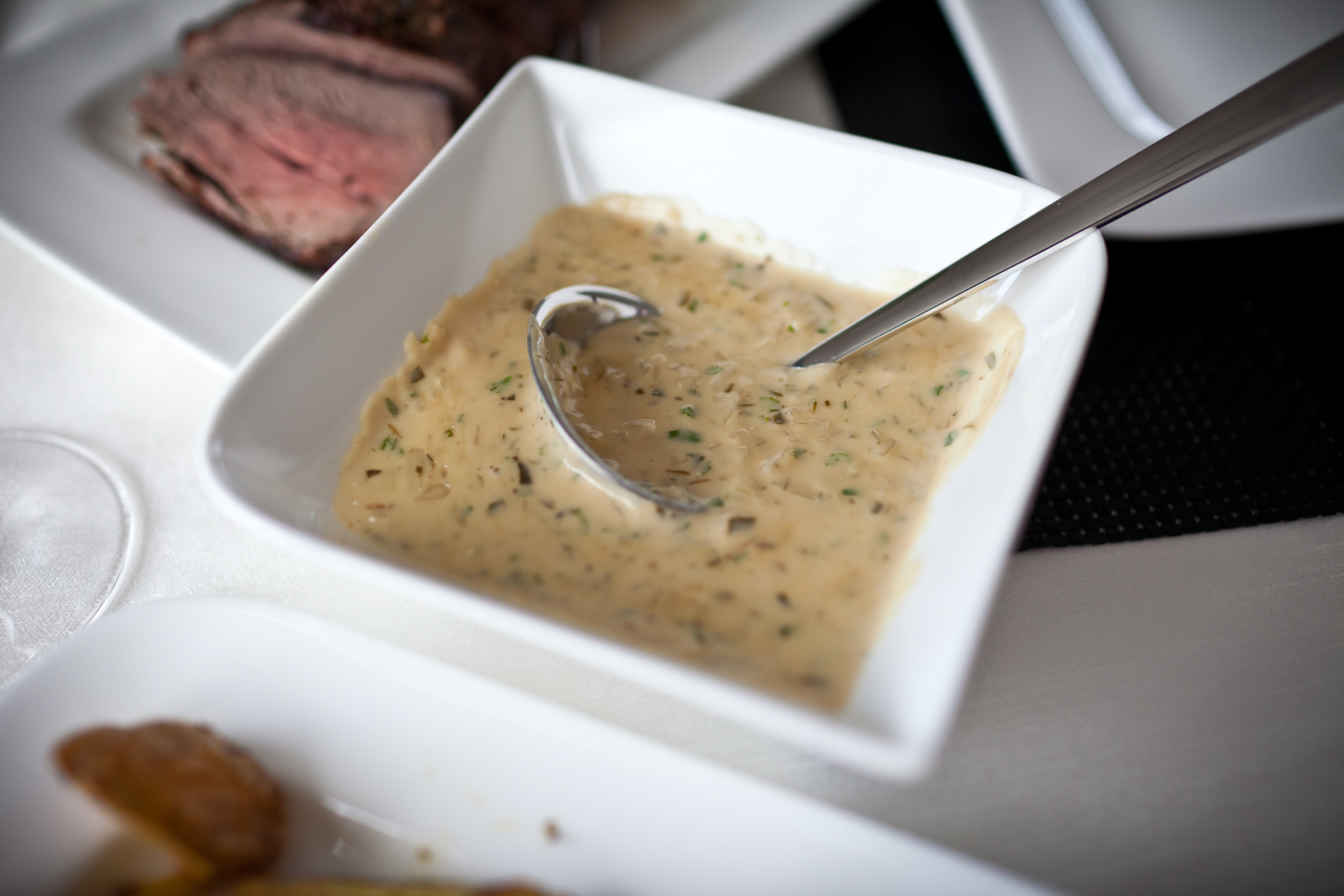|
Venetian Sauce
Venetian sauce (French: ''Sauce vénitienne'') is a classical French herb sauce used to accompany fish.Auguste Escoffier (1907), ''Le Guide culinaire'' It consists of: * a velouté and fish fumet base * equal quantities of tarragon vinegar and white wine reduced with: * chopped shallots and chervil * White wine sauce * Herb juice After cooking, it is strained and finished with chopped chervil and tarragon. See also * List of sauces The following is a list of notable Culinary art, culinary and prepared sauces used in cooking and food service. General * * * * * * * * * * * * * * * * * * * – Creamy sauce accompanies with seafood * * * * * * ... References {{ingredient-stub French sauces ... [...More Info...] [...Related Items...] OR: [Wikipedia] [Google] [Baidu] |
Auguste Escoffier
Georges Auguste Escoffier (; 28 October 1846 – 12 February 1935) was a French chef, restaurateur, and culinary writer who popularised and updated traditional French cooking methods. Much of Escoffier's technique was based on that of Marie-Antoine Carême, one of the codifiers of French ''haute cuisine''; Escoffier's achievement was to simplify and modernise Carême's elaborate and ornate style. In particular, he codified the recipes for the five mother sauces. Referred to by the French press as ''roi des cuisiniers et cuisinier des rois'' ("king of chefs and chef of kings"—also previously said of Carême), Escoffier was a preeminent figure in London and Paris during the 1890s and the early part of the 20th century. Alongside the recipes, Escoffier elevated the profession. In a time when kitchens were loud, riotous places where drinking on the job was commonplace, Escoffier demanded cleanliness, discipline, and silence from his staff. In bringing order to the kitchen, he t ... [...More Info...] [...Related Items...] OR: [Wikipedia] [Google] [Baidu] |
Le Guide Culinaire
''Le Guide Culinaire'' () is Georges Auguste Escoffier's 1903 French restaurant cuisine cookbook, his first. It is regarded as a classic and still in print. Escoffier developed the recipes while working at the Savoy, Ritz and Carlton hotels from the late 1880s to the time of publication. The hotels and restaurants Escoffier worked in were on the cutting edge of modernity, doing away with many overwrought elements of the Victorian era while serving the elite of society. History The first edition was printed in 1903 in French, the second edition was published in 1907, the third in 1912, and the current fourth edition in 1921. Many of the recipes Escoffier developed while working at the Savoy in London, and later the Ritz in Paris. He kept notes on note cards. Recipes were often created and named for famous patrons including royalty, nouveaux riches, and artists. After leaving the Savoy in 1898, he began work on the book. Usage and style The original text was printed for the use ... [...More Info...] [...Related Items...] OR: [Wikipedia] [Google] [Baidu] |
Fish Fumet
Stock, sometimes called bone broth, is a savory cooking liquid that forms the basis of many dishes particularly soups, stews, and sauces. Making stock involves simmering animal bones, meat, seafood, or vegetables in water or wine, often for an extended period. Mirepoix or other aromatics may be added for more flavor. Preparation Traditionally, stock is made by simmering various ingredients in water. A newer approach is to use a pressure cooker. The ingredients may include some or all of the following: Bones: Beef and chicken bones are most commonly used; fish is also common. The flavor of the stock comes from the bone marrow, cartilage and other connective tissue. Connective tissue contains collagen, which is converted into gelatin that thickens the liquid. Stock made from bones needs to be simmered for long periods; pressure cooking methods shorten the time necessary to extract the flavor from the bones. Meat: Cooked meat still attached to bones is also used as an ingredi ... [...More Info...] [...Related Items...] OR: [Wikipedia] [Google] [Baidu] |
Shallots
The shallot is a cultivar group of the onion. Until 2010, the (French red) shallot was classified as a separate species, ''Allium ascalonicum''. The taxon was synonymized with ''Allium cepa'' (the common onion) in 2010, as the difference was too small to justify a separate species. As part of the onion genus ''Allium'', its close relatives include garlic, scallions, leeks, chives, and the Chinese onion. Etymology and names The names ''scallion'' and ''shallot'' are derived from the Old French ''eschalotte'', by way of ''eschaloigne'', from the Latin ''Ascalōnia caepa'' or Ascalonian onion, a ''Ascalōnia caepa'' or Ascalonian onion, a namesake of the ancient city of Ascalon. The term ''shallot'' is usually applied to the French red shallot (''Allium cepa'' var. ''aggregatum'', or the ''A. cepa'' Aggregatum Group). It is also used for the Persian shallot or ''musir'' (''A. stipitatum'') from the Zagros Mountains in Iran and Iraq, and the French gray shallot ('' Allium oscha ... [...More Info...] [...Related Items...] OR: [Wikipedia] [Google] [Baidu] |
Chervil
Chervil (; ''Anthriscus cerefolium''), sometimes called French parsley or garden chervil (to distinguish it from similar plants also called chervil), is a delicate annual herb related to parsley. It was formerly called myrhis due to its volatile oil with an aroma similar to the resinous substance myrrh. It is commonly used to season mild-flavoured dishes and is a constituent of the French herb mixture . Name The name ''chervil'' is from Anglo-Norman, from Latin or , meaning "leaves of joy"; the Latin is formed, as from an Ancient Greek word (). Description The plants grow to , with tripinnate leaves that may be curly. The small white flowers form small umbels, across. The fruit is about 1 cm long, oblong-ovoid with a slender, ridged beak. Distribution and habitat A member of the Apiaceae, chervil is native to the Caucasus but was spread by the Romans through most of Europe, where it is now naturalised. It is also grown frequently in the United States, where it some ... [...More Info...] [...Related Items...] OR: [Wikipedia] [Google] [Baidu] |
Wine Sauce
Wine sauce is a culinary sauce prepared with wine as a primary ingredient, heated and mixed with stock, butter, herbs, spices, onions, garlic and other ingredients. Several types of wines may be used, including red wine, white wine and port wine. Some versions are prepared using a reduction. Several types of wine sauces exist, and it is used in many dishes, including those prepared with seafood, poultry and beef. Wine sauces are associated with French cuisine. Ingredients and preparation Wine is a primary ingredient in wine sauce. Wine sauce may be prepared using various wines, such as red wines, white wines, Burgundy wines, and port wines, among others. Ingredients in addition to wine may include stock, mushrooms, butter or shrimp butter, tarragon vinegar, shallot, chervil, tarragon, spices, onion, garlic and others. Some wine sauces are prepared using a reduction, which may intensify their flavor or make the flavor sharper. Reduced wine may be used to prepare thicker wine sa ... [...More Info...] [...Related Items...] OR: [Wikipedia] [Google] [Baidu] |
Herb Juice
Herbs are a widely distributed and widespread group of plants, excluding vegetables, with savory or aromatic properties that are used for flavoring and garnishing food, for medicinal purposes, or for fragrances. Culinary use typically distinguishes herbs from spices. ''Herbs'' generally refers to the leafy green or flowering parts of a plant (either fresh or dried), while ''spices'' are usually dried and produced from other parts of the plant, including seeds, bark, roots and fruits. Herbs have a variety of uses including culinary, medicinal, aromatic and in some cases, spiritual. General usage of the term "herb" differs between culinary herbs and medicinal herbs; in medicinal or spiritual use, any parts of the plant might be considered "herbs", including leaves, roots, flowers, seeds, root bark, inner bark (and cambium), resin and pericarp. The word "herb" is pronounced in Commonwealth English, but is standard among American English speakers as well as those from regions ... [...More Info...] [...Related Items...] OR: [Wikipedia] [Google] [Baidu] |
Tarragon
Tarragon (''Artemisia dracunculus''), also known as estragon, is a species of perennial herbaceous plant, herb in the family Asteraceae. It is widespread in the wild across much of Eurasia and North America and is cultivated for culinary and medicinal purposes. One subspecies, ''Artemisia dracunculus'' var. ''sativa'', is cultivated to use the leaves as an aromatic culinary herb. In some other subspecies, the characteristic aroma is largely absent. Informal names for distinguishing the variations include "French tarragon" (best for culinary use) and "Russian tarragon". Tarragon grows to tall, with slender branches. The leaves are lanceolate, long and broad, glossy green, with an Glossary of leaf morphology#Edge, entire margin. The flowers are produced in small capitulum (flower), capitula diameter, each capitulum containing up to 40 yellow or greenish-yellow florets. French tarragon, however, seldom produces any flowers (or seeds). Some tarragon plants produce seeds that are g ... [...More Info...] [...Related Items...] OR: [Wikipedia] [Google] [Baidu] |
List Of Sauces
The following is a list of notable Culinary art, culinary and prepared sauces used in cooking and food service. General * * * * * * * * * * * * * * * * * * * – Creamy sauce accompanies with seafood * * * * * * * (salsa roja) * * * – a velouté sauce flavored with tomato * * – prepared using mushrooms and lemon * * * * * * * * Prepared sauces * * * * * * * * * * * * * * * * * By type Brown sauces include: * * * * * * * * * * * Butter sauces * * * – Butter emulsified with water * Beurre noisette – Brown butter sauce * * Emulsified sauces * * * * * * * * * (w/ chilli) Fish sauces * * * * Green sauces * See Tomato sauces * * Hot sauces * Pepper sauces *Mustard sauces ** * Chile pepper-tinged sauces * Condiments made from hot sauce include: ** ** ** sauce ** sauce ** ** ** Meat-based sauces * * * * * * * * Pink sauces * See Pink sauce (disamb ... [...More Info...] [...Related Items...] OR: [Wikipedia] [Google] [Baidu] |




